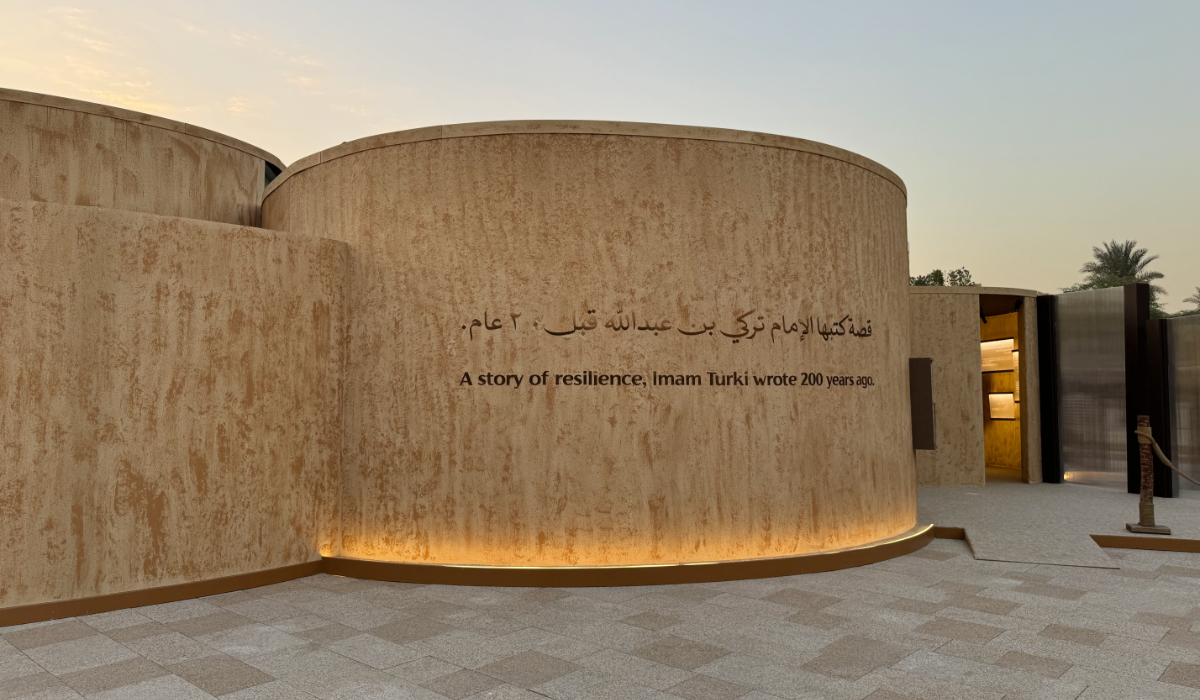RIYADH: The fifth anniversary of the launch of the Diriyah Gate Development Authority was an amazing milestone, Kiran Haslam, the organization’s chief marketing officer, told the Arab News podcast “The Mayman Show.”
In the podcast, which features actors, comedians, models, athletes, and more, he said: “It’s a milestone that we want to shout about to each other in the office, more so than outside the office.”
Haslam pointed out that the DGDA’s “unique working environment and mandate” was recently recognized as being one of the best places to work in the Kingdom, adding that this was “incredible, but sort of not a surprise.”

The Diriyah Gate Development Authority made Saudi Arabia’s “Great Place To Work” list because it offers a “unique working environment,” its CMO Kiran Haslam told The MaymanShow on the DGDA 5th anniversary. (AN Photo)
He said that as an organization each member of the authority cooperated and interacted with each other in a refreshing, dynamic, and energetic manner.
“Sometimes there’s a lot of excitement. Not wanting to name brands, I will say that I have visited the offices of Google. It has a reputation for very open, exciting, and dynamic workplaces where people enjoy themselves,” Haslam added.
“The crossover point between where it is work and where it is just how we want to live, has blurred. The DGDA is just like Google in that regard, with a lot less beanbags around the office. Google of course is famous for having beanbags everywhere. Our spines are all straight because we’re sitting on good chairs, and we’re still able to interact in that kind of positive manner.”
Opinion
This section contains relevant reference points, placed in (Opinion field)
Haslam, the author of two children’s books, joined the DGDA with the mindset of an anthropologist. He is also a musician and a composer with a master’s degree in guitar, as well as a professional with experience in the yachting and automotive industries.
He noted that what was magnificent about the authority were the kind of assets it was creating for a city within Riyadh. “At Diriyah, we are creating mixed-use assets,” he said.
“Historically, people have talked about it almost from a development perspective only, which is the five-star hotels, the academies and university concepts, and all of the stuff that create a way to live inside a city within the capital city, which is Riyadh.”

Diriyah Gate Development Authority’s 5th anniversary “is an amazing milestone,” Kiran Haslam told The Mayman Show. (AN Photo)
Highlighting examples of the authority’s attention to detail during the development of Diriyah, he said: “It’s sort of the humanity which is linking all the projects, all of those assets, all of those locales and initiatives. And the entire project in itself is human scale.
“So, it’s all in reference to Najdi architecture and it’s all adobe construction. We have created 180 million mud bricks thus far to build the first phase of Diriyah.”
At-Turaif was built with adobe mud and other natural materials in the 1700s and features courtyards, alleyways, and towers that showcase quintessential Najdi architecture and tell the story of a traditional Saudi way of life. In 2010, almost three centuries later, the ruins of At-Turaif were designated a UNESCO World Heritage Site.

At-Turaif was built with adobe mud and other natural materials in the 1700s and features courtyards, alleyways, and towers that showcase quintessential Najdi architecture. (Supplied)
Haslam pointed out that the mud bricks would be used to replicate the feel of At-Turaif, maintain its ambience, and amplify its spirit and meaning.
“To give you a little idea, 180 million mud bricks, if you stack them end to end, is 3.7 times longer than the Great Wall of China.
“So, it’s a big project, it’s a complex project, but it’s one which is always rooted in humanity, culture, and interaction. That’s what really sets the project apart,” he added.
“The Mayman Show” episode featuring Kiran Haslam will launch on Aug. 5 at 6 p.m. Riyadh time.



































